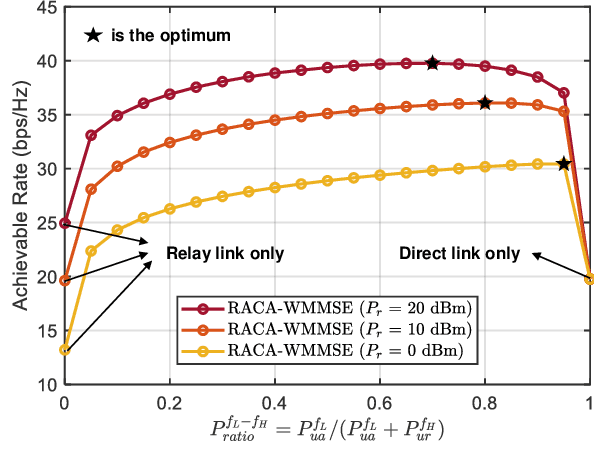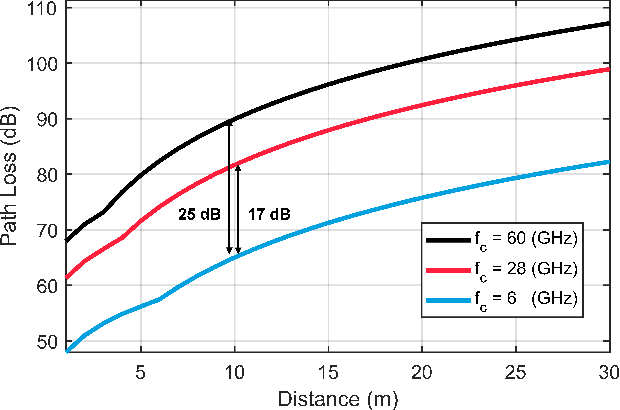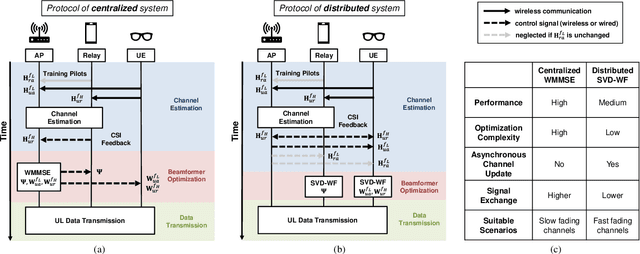Wen-Chiao Tsai
Andy
Relay-Assisted Carrier Aggregation (RACA) Uplink System for Enhancing Data Rate of Extended Reality (XR)
Jul 02, 2024



Abstract:In Extended Reality (XR) applications, high data rates and low latency are crucial for immersive experiences. Uplink transmission in XR is challenging due to the limited antennas and power of lightweight XR devices. To improve data transmission rates, we investigate a relay-assisted carrier aggregation (RACA) system. The XR device simultaneously transmits data to an access point (AP) and a relay in proximity over low-frequency and high-frequency bands, respectively. Then, the relay down-converts and amplifies the signals to the AP, effectively acting as an additional transmit antenna for the XR device. In this paper, we propose two algorithms to maximize the data rate of the XR device in their respective protocols. In the centralized protocol, the rate maximization problem is equivalently transformed as a weighted mean square error minimization (WMMSE) problem which can be solved iteratively by alternative optimization. In the distributed protocol, the rate maximization problem is decomposed into two independent sub-problems where the rate of the direct link and the rate of the relay link are maximized by singular value decomposition (SVD)-based methods with water-filling (WF). Simulation results show that the rate of the RACA system is improved by $32\%$ compared to that of the conventional carrier aggregation scheme.
Neural Network-Aided BCJR Algorithm for Joint Symbol Detection and Channel Decoding
May 30, 2020



Abstract:Recently, deep learning-assisted communication systems have achieved many eye-catching results and attracted more and more researchers in this emerging field. Instead of completely replacing the functional blocks of communication systems with neural networks, a hybrid manner of BCJRNet symbol detection is proposed to combine the advantages of the BCJR algorithm and neural networks. However, its separate block design not only degrades the system performance but also results in additional hardware complexity. In this work, we propose a BCJR receiver for joint symbol detection and channel decoding. It can simultaneously utilize the trellis diagram and channel state information for a more accurate calculation of branch probability and thus achieve global optimum with 2.3 dB gain over separate block design. Furthermore, a dedicated neural network model is proposed to replace the channel-model-based computation of the BCJR receiver, which can avoid the requirements of perfect CSI and is more robust under CSI uncertainty with 1.0 dB gain.
 Add to Chrome
Add to Chrome Add to Firefox
Add to Firefox Add to Edge
Add to Edge